Periodontal Disease Classification 2017
Periodontal disease classification 2017. In the World Workshop of Periodontal and Peri-im-plant Diseases held in 2017 an official classification system for priodontal and peri-implant diseases and conditions was agreed which was published later in 2018 in the two most prestigious journals in the area. Another edition of a joint EFPAAP workshop has just closed in Chicago and periodontal scientists and teachers all over the world are eagerly awaiting the proceedings to be published in our core scientific journals the Journal of Periodontology and the Journal of Clinical Periodontology. New AAP Periodontal Classification Guidelines.
The periodontal classification system had an unstable past with a relatively stable future. Journal of Periodontology and Journal Clinical of Periodontology. The guidelines have not been updated since 1999 so this is a pretty big deal.
16 Other systemic conditions such as neoplastic diseases may affect the periodontal apparatus independent of dental plaque biofilm-induced periodontitis 21 and such clinical findings should also be classified based on the primary systemic disease and be grouped as Systemic Diseases or Conditions Affecting the Periodontal. This classification system is based on the knowledge of infection and host response paradigm. 2017 World workshop defines periodontitis as a chronic multifactorial inflammatory disease associated with dysbiotic plaque biofilms and characterized by progressive destruction of the tooth-supporting apparatus 52.
Breaking down the new 2017 periodontal classification system Jessica Raymond-Allbritten BASDH CRDH breaks down the new 2017 periodontal classification system and defines each category. AAP 2017 CLASSIFICATION OF PERIODONTAL DISEASE PART 1 1. Case Series Applying the staging and grading system leads to an understanding of the need for periodontal referral and early periodontal treatment intervention.
Primers 3 17038 2017. A New Classification of Periodontal Diseases. American Academy of Periodontology Task Force Report on the Update to the 1999 Classification of Periodontal Diseases and Conditions.
In 2017 both the American Academy of Periodontology AAP and the European Federation of Periodontology at the World Workshop updated the 1999 guidelines and classifications for diagnosing periodontal disease and developed new classifications for peri-implant diseases. PROCEEDINGS OF THE WORLD WORKSHOP ON THE CLASSIFICATION OF PERIODONTAL AND PERI-IMPLANT DISEASES AND CONDITIONS CO-SPONSORED BY AMERICAN ACADEMY OF PERIODONTOLOGY AAP AND EUROPEAN FEDERATION OF PERIODONTOLOGY EFP November 9 to 11 2017 1 2. Such conditions are grouped as Periodontitis as a Manifestation of Systemic Disease and classification should be based on the primary systemic disease.
She explains how the new system allows clinicians to better categorize patients oral health based on clinical and radiographic findings. Systemic disorders that have a major impact on the loss of periodontal tissues by influencing periodontal inflammation 11.
It is characterized by loss of periodontal tissue support manifested through clinical attachment loss CAL and.
New AAP Periodontal Classification Guidelines. The periodontal classification system had an unstable past with a relatively stable future. Another edition of a joint EFPAAP workshop has just closed in Chicago and periodontal scientists and teachers all over the world are eagerly awaiting the proceedings to be published in our core scientific journals the Journal of Periodontology and the Journal of Clinical Periodontology. The 2017 World Workshop Classification system for periodontal and peri-implant diseases and conditions was developed in order to accommodate advances in knowledge derived from both biological and clinical research that have emerged since the 1999 International Classification of Periodontal Diseases. Classification of necrotizing periodontal diseases. Such conditions are grouped as Periodontitis as a Manifestation of Systemic Disease and classification should be based on the primary systemic disease. This classification system is based on the knowledge of infection and host response paradigm. 16 Other systemic conditions such as neoplastic diseases may affect the periodontal apparatus independent of dental plaque biofilm-induced periodontitis 21 and such clinical findings should also be classified based on the primary systemic disease and be grouped as Systemic Diseases or Conditions Affecting the Periodontal. TABLE 1 Classification of systemic diseases and conditions that affect the periodontal supporting tissues adapted from Albandar et al1 Classification Disorders ICD10 code 1.
TABLE 1 Classification of systemic diseases and conditions that affect the periodontal supporting tissues adapted from Albandar et al1 Classification Disorders ICD10 code 1. The periodontal classification system had an unstable past with a relatively stable future. New AAP Periodontal Classification Guidelines. 16 Other systemic conditions such as neoplastic diseases may affect the periodontal apparatus independent of dental plaque biofilm-induced periodontitis 21 and such clinical findings should also be classified based on the primary systemic disease and be grouped as Systemic Diseases or Conditions Affecting the Periodontal. Breaking down the new 2017 periodontal classification system Jessica Raymond-Allbritten BASDH CRDH breaks down the new 2017 periodontal classification system and defines each category. Journal of Periodontology and Journal Clinical of Periodontology. On June 21 2018 in Chicago AAP published official proceedings frm d 9- 11 nov2017 World Workshop.



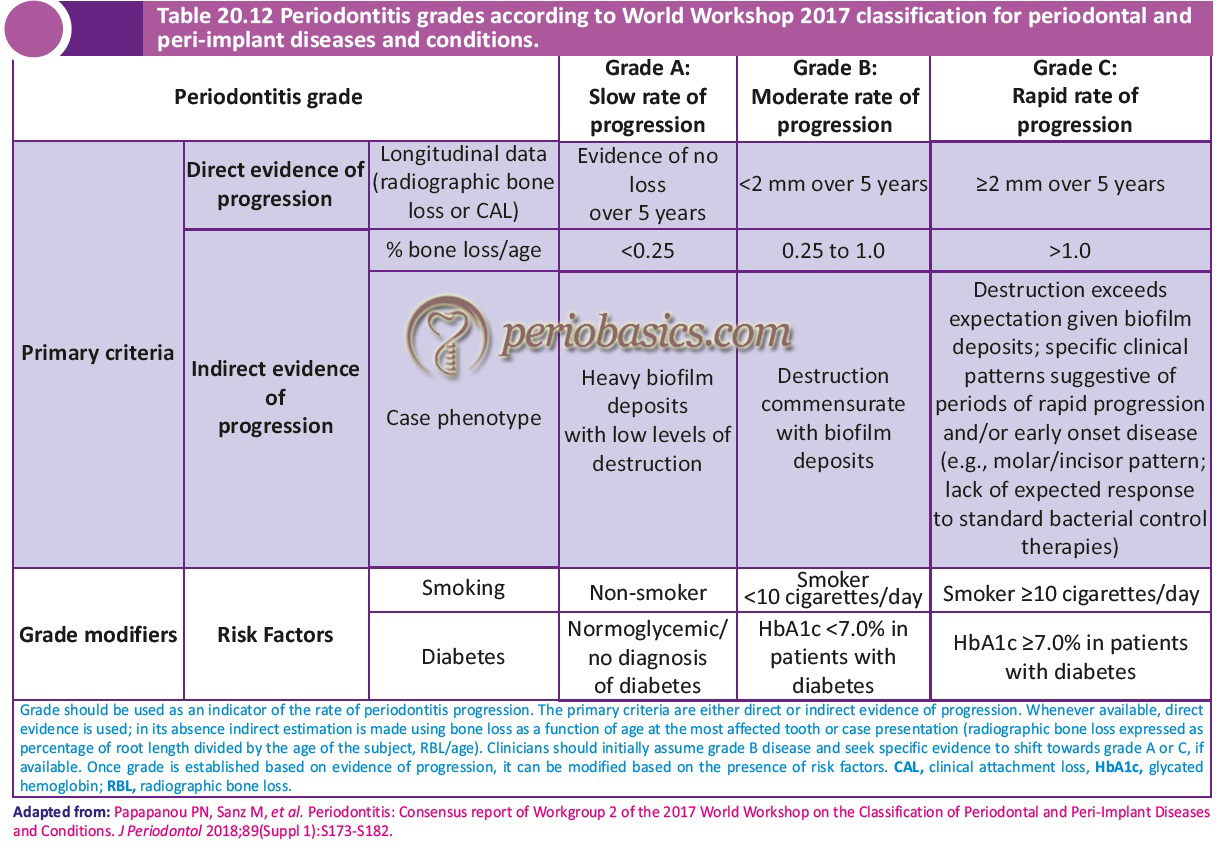

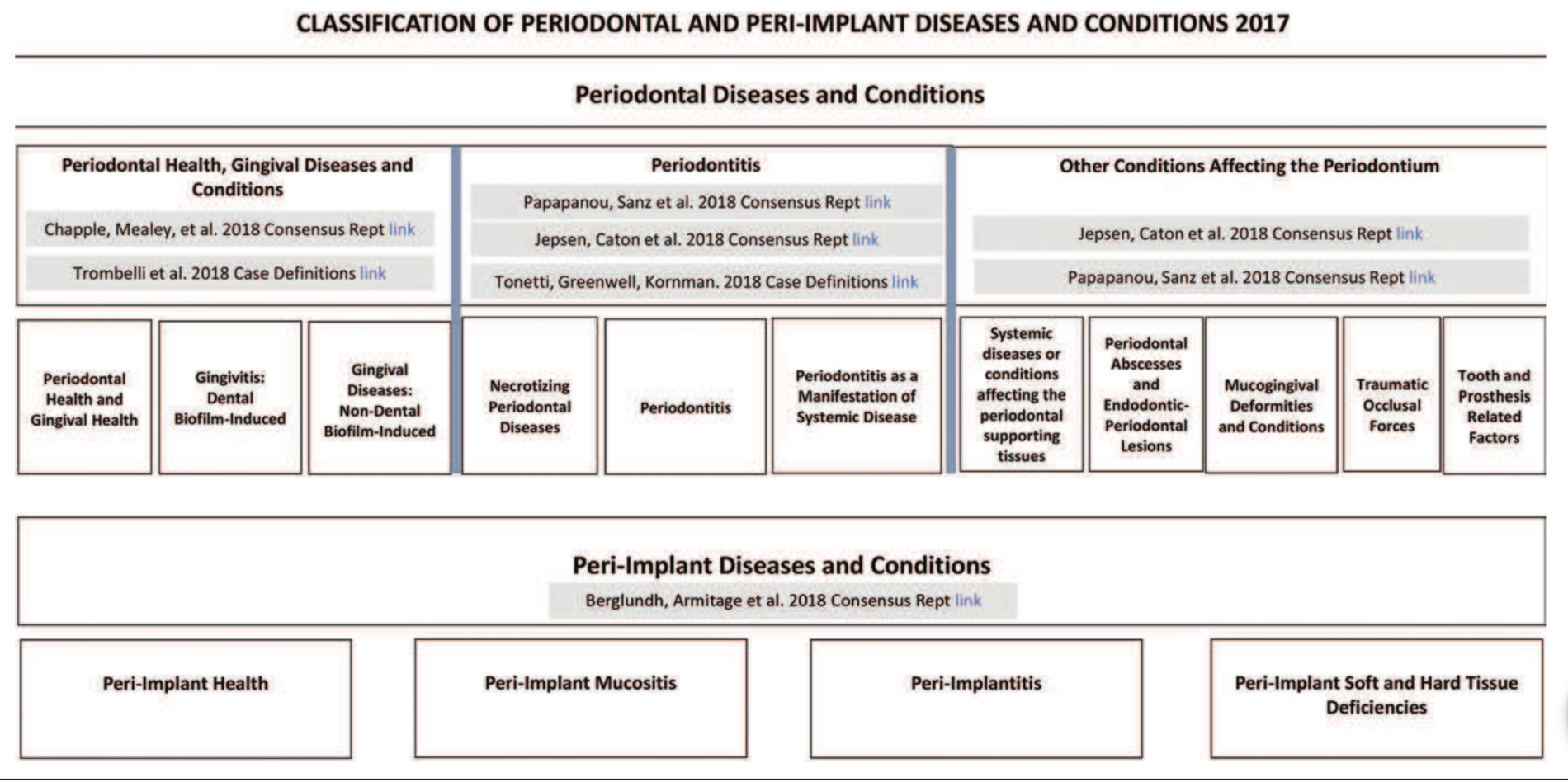
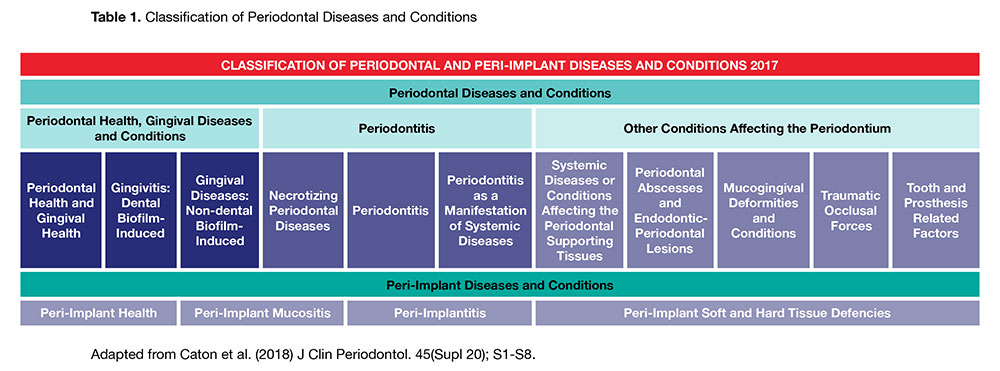





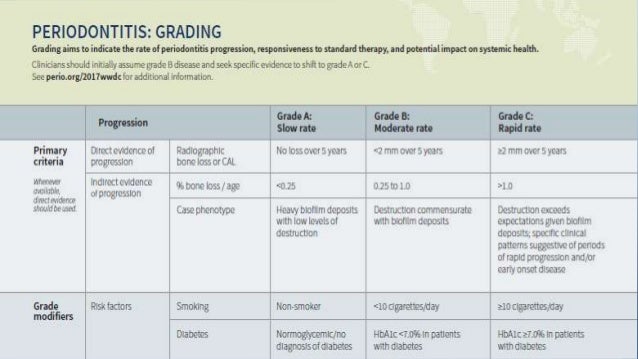


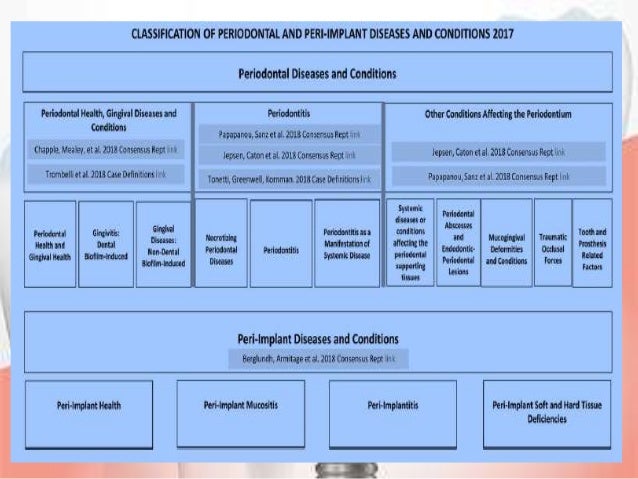
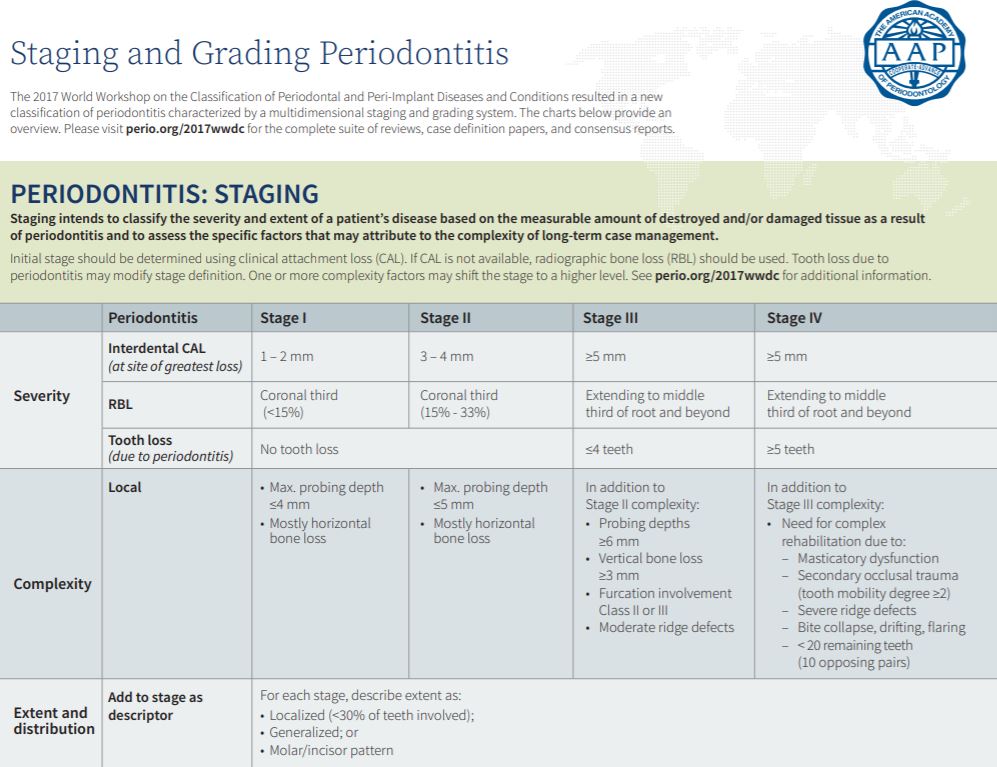
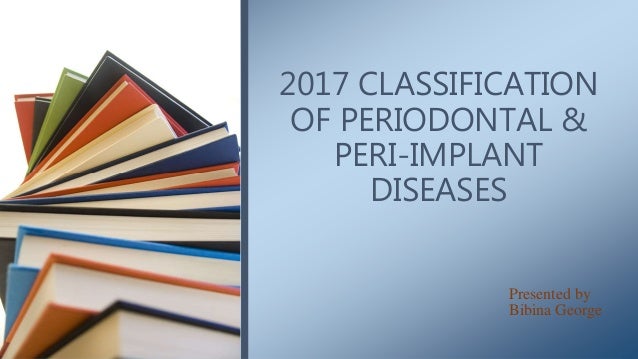




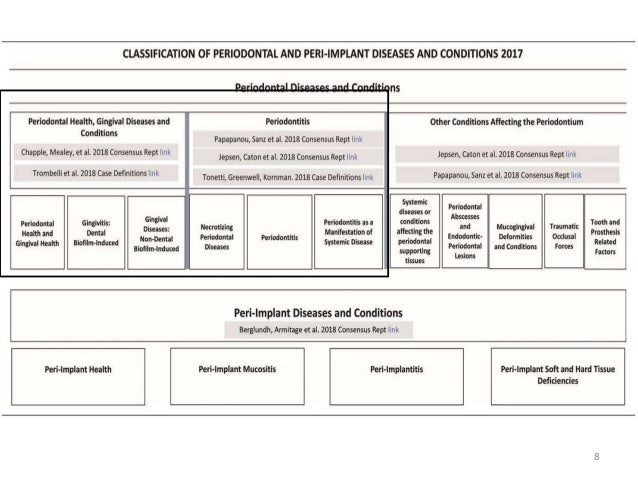


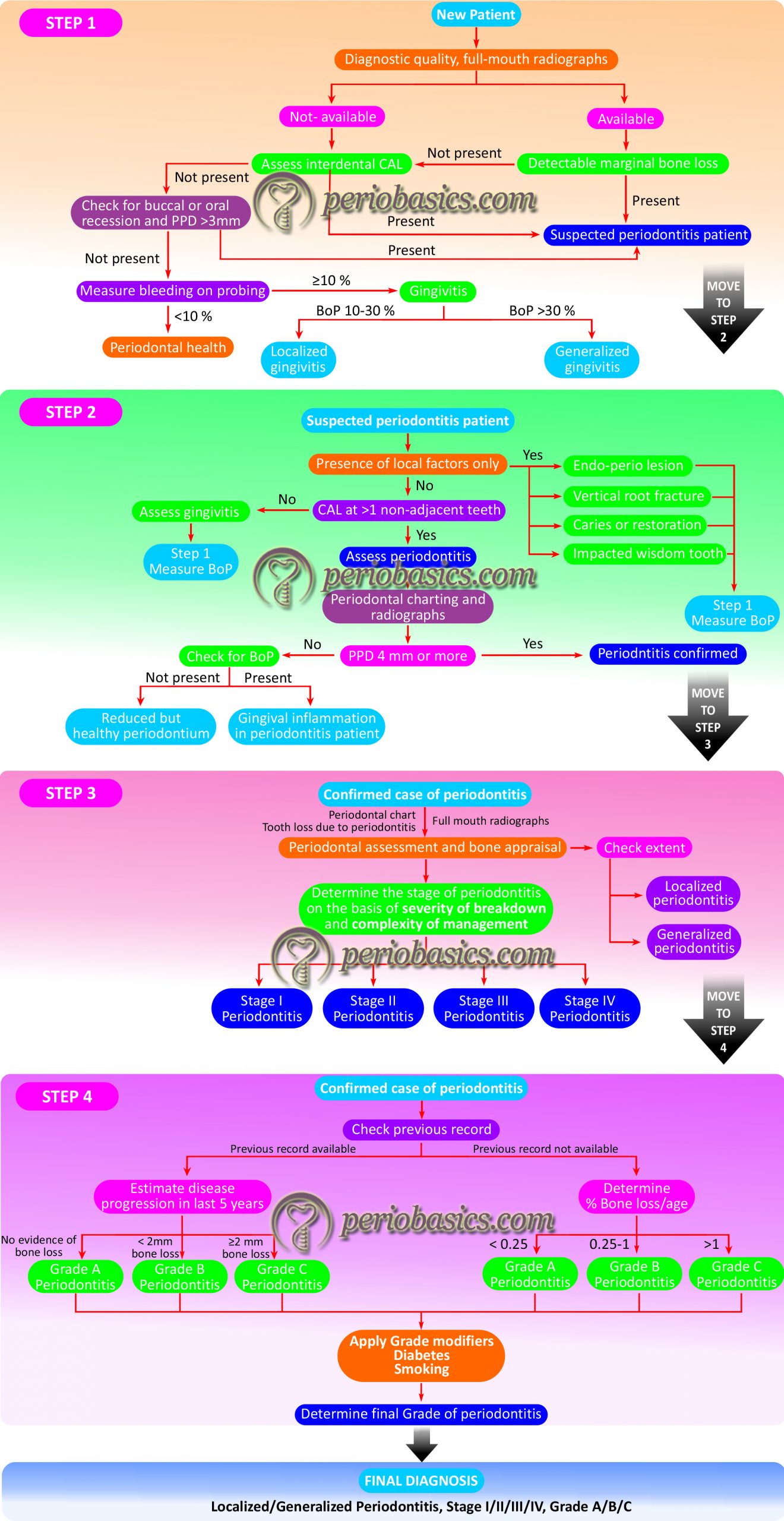

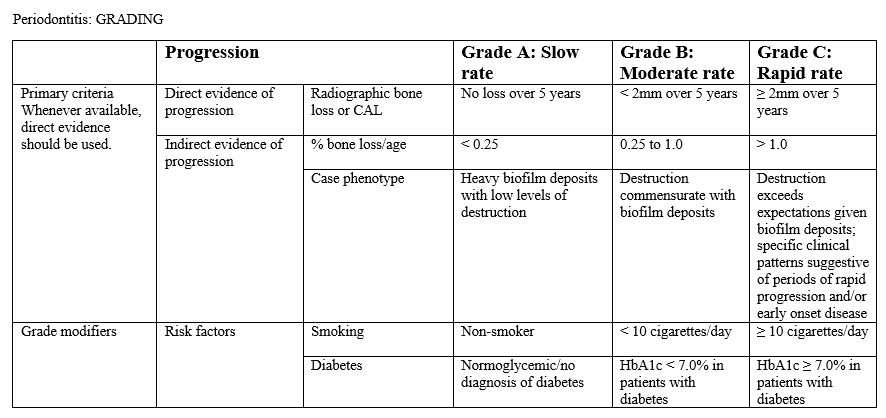
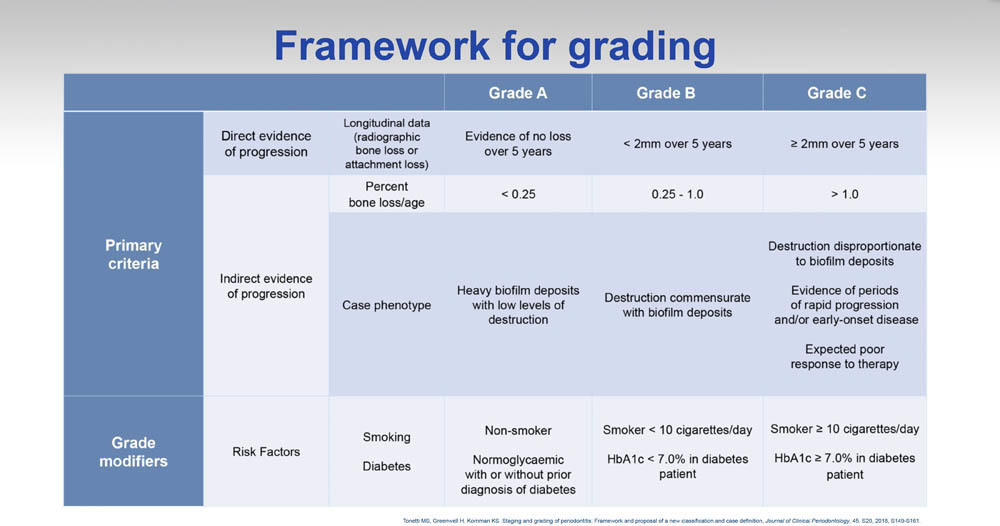

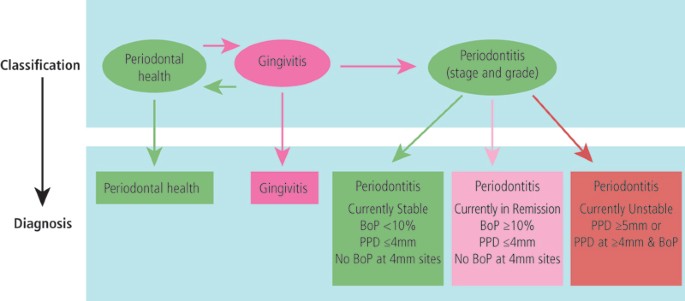


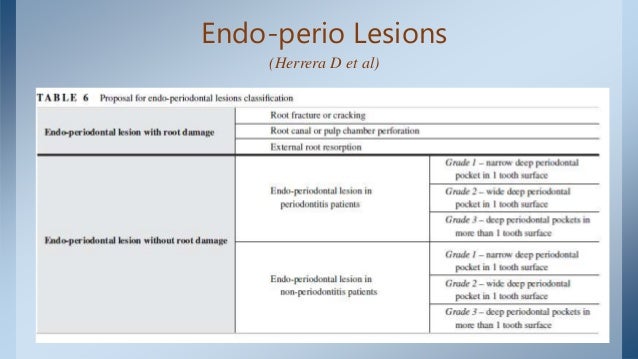








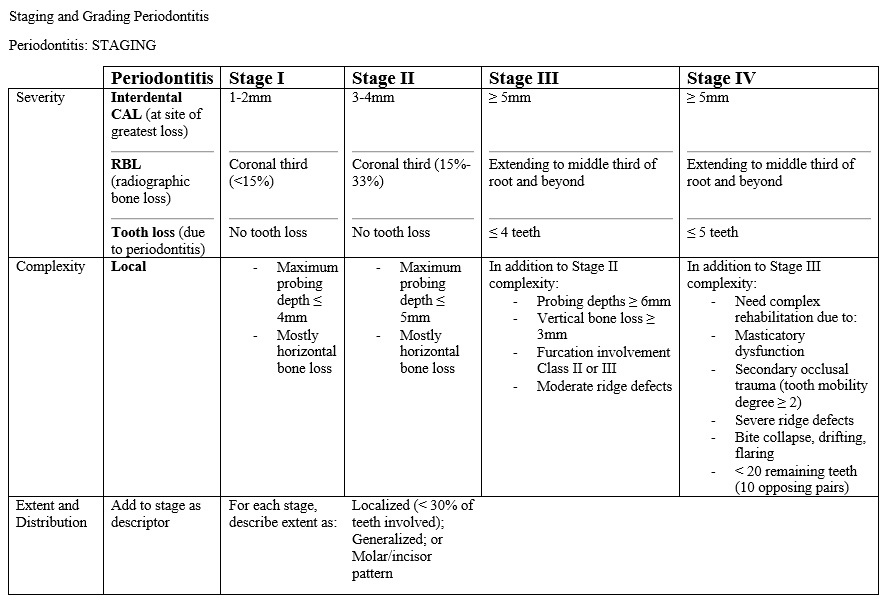


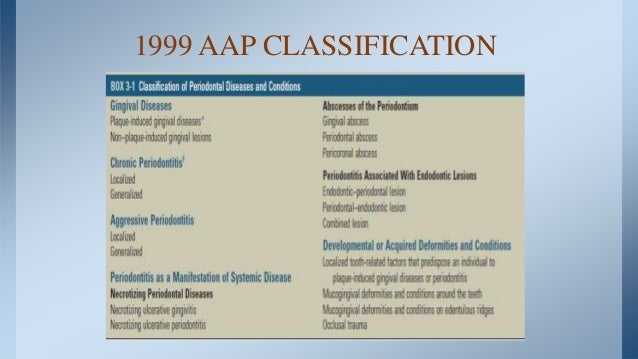

Posting Komentar untuk "Periodontal Disease Classification 2017"